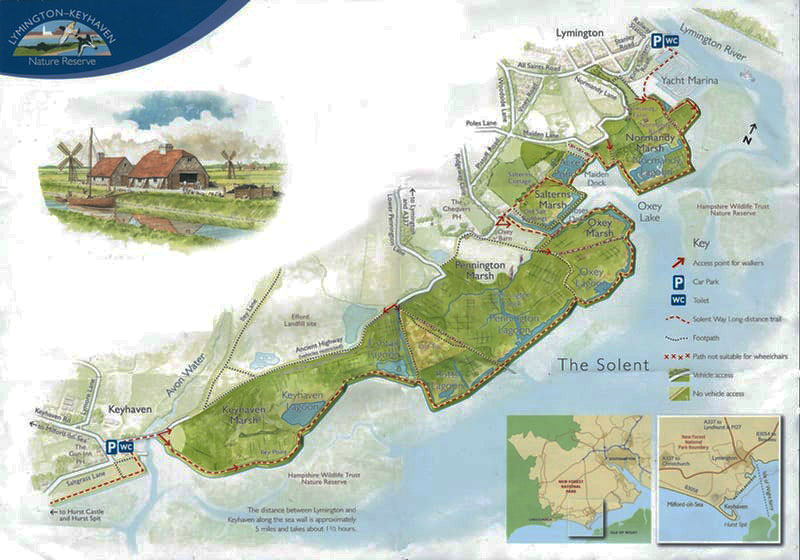Lymington is an attractive maritime market town facing the Isle of Wight across the Solent. One of the most sought after locations on the south coast in Wessex today its character is rooted in past activities. Historic Lymington was involved with smuggling, ship building, sailing and salt.
Daniel Defoe in the early 1700s complained that “rogueing and smuggling was a major industry” and the picturesque cobbled Quay Hill leading down to the Quay today had Inns with underground passages for contraband – brandy, tobacco, tea and fine silks. Lymington has been building boats since medieval times Today it is a mecca for sailors, a major sailing centre with marinas and yacht havens, boat builders, chandlers, yacht clubs. In summer there are boat trips from the Quay.
When lockdown is eased, come and explore the many delights which Lymington has to offer, whatever the season. A “twitchers’ paradise” is the Lymington-Keyhaven Nature Reserve, which covers 500 acres (200Ha) between the mouth of the Lymington River and the village of Keyhaven. This was the site of the Salterns which flourished from medieval times till the 19th century and was the main producer of sea salt in the country. Fine Georgian houses seen in and around Lymington were built with the profits. A public footpath, part of the Solent Way which the locals call the Sea Wall, runs the length of the reserve, about 5 miles, with spectacular views to the Needles and the Isle of Wight – and there’s a great pub, The Gun, at the end in Keyhaven.

Just inside the seawall lie a series of former Salterns, now shallow lagoons, connected to the sea through a system of sluices and tidal flaps. In winter wading birds, including black-tailed godwit, curlew and lapwing, feed in the flooded pastures alongside wigeon and brent geese. Spring sees the arrival of migrants from the south. Wheatears appear on the shingle and whitethroats sing from clumps of gorse. Many types of duck, oyster catchers, white egrets, herons and kingfishers may also be spotted all year round. A large number of wetland plants and animals thrive there.


Salt was made by evaporating seawater in shallow lagoons. Wind pumps were then used to draw off the brine solution into large metal pans where it was heated until only the salt remained. Cheaper mined salt from Cheshire caused gradual decline and the last Saltern closed in 1865. So birds and wild life moved in and this little known Nature Reserve with fabulous views across the Solent is a delight. If the full 5 miles is too long there are short cuts from the sea wall via lanes back to Lymington as you can see from the map. We’d be delighted to advise you on how to enjoy a visit to Lymington. If you wish we could take you for a guided walk around the town or along the sea wall.
Lymington Salters Nature Reserve
by Frances Brook
23 February 2021

